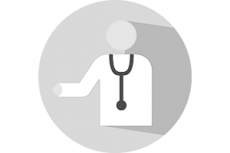
All iLive content is medically reviewed or fact checked to ensure as much factual accuracy as possible.
We have strict sourcing guidelines and only link to reputable media sites, academic research institutions and, whenever possible, medically peer reviewed studies. Note that the numbers in parentheses ([1], [2], etc.) are clickable links to these studies.
If you feel that any of our content is inaccurate, out-of-date, or otherwise questionable, please select it and press Ctrl + Enter.
The muscle that lifts the scapula and back pain
Medical expert of the article
Last reviewed: 04.07.2025

The muscle that lifts the scapula - m. levator scapulae with a fixed neck first participates in the rotation of the scapula, lowering the glenoid cavity, and then lifts the scapula up. If the scapula is fixed by other muscles - helps to complete the rotation of the neck to its side. With bilateral contraction, it participates in the extension of the neck and controls flexion of the neck. The muscle that lifts the scapula is a synergist of the upper bundles of the trapezius muscle when lifting the shoulder girdle upward.
Origin: posterior tubercles of the transverse processes of the I-IV cervical vertebrae
Attachment: Angulus superior scapulae
Innervation: spinal nerves C3-C5 - n. dorsalis scapulae
 [ 1 ]
[ 1 ]
Diagnostics
Trigger zones are formed in two areas of the levator scapulae muscle: the primary area is at the angle of the neck where the muscle emerges from under the anterior border of the superior bundles of the trapezius muscle; the secondary area is located slightly above the insertion of the muscle on the superior angle of the scapula. The superior trigger zone is best palpated with the patient sitting comfortably in a chair at the front edge of the seat, with the upper body resting on the back. With the elbows resting on the armrests of the chair, the levator scapulae muscle and the superior bundles of the trapezius muscle relax slightly, allowing the examiner to separate the fibers of the trapezius muscle with a finger in order to expose and grasp the levator scapulae muscle.
When palpating the lower trigger zone, the patient can sit or lie on the opposite side. Palpation is performed by sliding the fingers across the fibers in an area located approximately 1.3 cm above the superior angle of the scapula. Tense cords containing trigger zones are extremely painful upon palpation, but it does not cause local spasmodic responses and referred pain, since the area of localization of the lower trigger zone is covered by the trapezius muscle.
 [ 2 ], [ 3 ], [ 4 ], [ 5 ], [ 6 ]
[ 2 ], [ 3 ], [ 4 ], [ 5 ], [ 6 ]
Referred pain
Trigger points in the levator scapulae muscle are one of the most common causes of neck pain or neck and shoulder pain. The pain is projected in the lower corner of the neck with a zone of spreading along the vertebral edge of the scapula and the back of the shoulder.
Использованная литература

